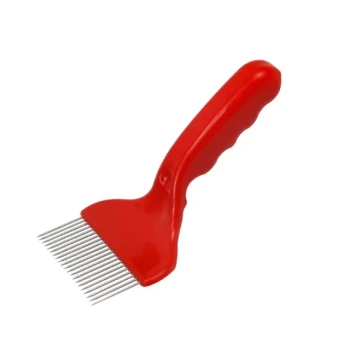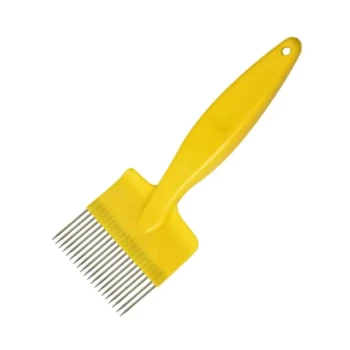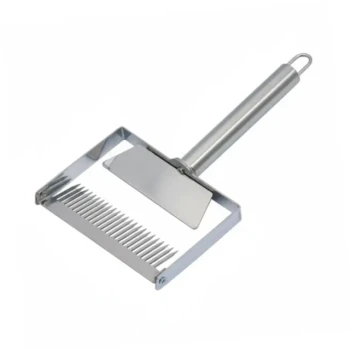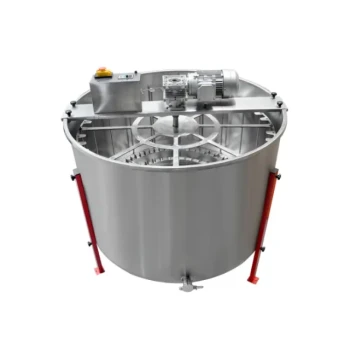For the hobbyist or small-scale beekeeper, the most suitable choice is a manual honey extractor. These hand-crank models provide an excellent balance of cost, control, and efficiency for anyone managing fewer than ten hives. They are the definitive entry point into honey extraction without the significant investment required for motorized equipment.
The core decision for a new beekeeper isn't just about choosing a manual extractor, but about understanding which type and size of manual extractor best aligns with your budget, physical effort, and the number of hives you manage.
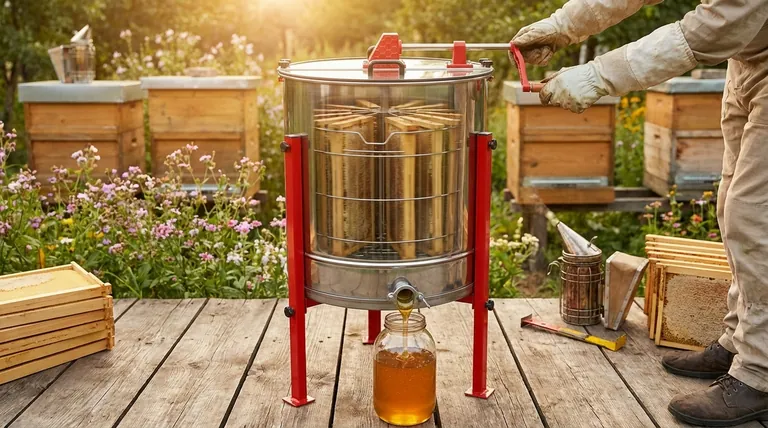
Why Manual Extractors Excel for Small Apiaries
For those just starting or intentionally keeping their apiary small, a manual extractor is a logical and practical investment. Its advantages are perfectly suited for the scale of a hobbyist.
Unbeatable Cost-Effectiveness
A manual extractor is the most budget-friendly way to begin extracting your own honey. This makes it an accessible first step for beginners who are already investing in hives, bees, and other essential gear.
Direct, Hands-On Control
Operating a hand-crank gives you a tangible feel for the process. You can gently ramp up the speed, which helps prevent damaging delicate new combs, giving you precise control that is often preferable for small batches.
Simplicity and Maintenance
With fewer complex parts than their motorized counterparts, manual extractors are generally simpler to use, clean, and store. This straightforward design means less can go wrong, a significant benefit for any beekeeper.
The Critical Design Choice: Tangential vs. Radial
Beyond manual vs. electric, the most important distinction is the internal design of the basket that holds the frames.
The Tangential Extractor
In a tangential extractor, the frame lies flat against the wall of the drum. Centrifugal force pulls honey from the outward-facing side of the comb.
This design requires you to stop, flip the frames, and spin again to extract honey from the other side. While it adds a step, it's highly effective and common in smaller, more affordable extractors.
The Radial Extractor
In a radial extractor, frames are positioned like the spokes of a wheel, with the top bar facing outward. Centrifugal force extracts honey from both sides of the comb simultaneously.
This is a more efficient design but is typically found in larger and more expensive models. It becomes a major time-saver as your hive count grows.
Sizing Your Extractor Correctly
Choosing the right size prevents you from buying a tool you'll quickly outgrow or one that's unnecessarily large for your needs.
A Practical Rule of Thumb
A simple guideline is to have an extractor that can hold about half the number of frames as you have hives.
For example, a beekeeper with 4 hives would be well-served by a 2-frame extractor. Someone with 8 hives should look for a 4-frame model.
Planning for Future Growth
It's wise to consider your future plans. If you intend to expand your apiary in the next couple of years, investing in a slightly larger extractor now can save you from needing to upgrade later.
Understanding the Trade-offs and Alternatives
Objectivity requires acknowledging the limitations and other options available.
The Physical Effort
The most obvious trade-off is the labor involved. A manual extractor requires you to provide the power. While manageable for a few hives, it can become a significant workout with larger harvests.
The Time Investment
Manual extraction is inherently slower than using a motorized unit. The process of cranking and flipping frames takes time, which is a key factor to consider as your operation scales.
An Alternative to Consider: The Flow Hive
For beekeepers who prioritize avoiding heavy lifting and the entire extraction process, the Flow Hive presents a different path. This specialized hive allows honey to be harvested directly via a tap, eliminating the need for a separate extractor entirely, though it represents a different style of beekeeping.
Making the Right Choice for Your Apiary
Your decision should be guided by a clear understanding of your goals and the scale of your operation.
- If your primary focus is keeping costs low with 1-5 hives: A 2- or 4-frame manual tangential extractor is your most practical and economical choice.
- If you have 5-10 hives and anticipate modest growth: A larger 4-frame manual extractor (radial, if your budget allows) offers a good balance of effort and efficiency.
- If your priority is minimizing physical labor at all costs: Consider a small motorized extractor or investigate alternative beekeeping systems like the Flow Hive.
Ultimately, choosing the right extractor is about matching the equipment to the scale of your passion, not the other way around.
Summary Table:
| Feature | Tangential Extractor | Radial Extractor |
|---|---|---|
| Frame Placement | Flat against drum wall | Like spokes of a wheel |
| Extraction Process | Requires flipping frames | Extracts both sides simultaneously |
| Best For | Small batches, budget-conscious | Larger batches, efficiency |
| Cost | Typically more affordable | Generally more expensive |
Ready to Choose the Right Extractor for Your Beekeeping Journey?
At HONESTBEE, we specialize in supplying high-quality beekeeping supplies and equipment to commercial apiaries and distributors. Whether you're a hobbyist looking for your first manual extractor or a small-scale beekeeper planning for growth, we have the reliable equipment you need.
Let us help you:
- Select the perfect extractor size and type for your hive count
- Access durable, professional-grade equipment at wholesale prices
- Plan for future growth with scalable solutions
Contact our expert team today to discuss your specific needs and get personalized recommendations!
Visual Guide
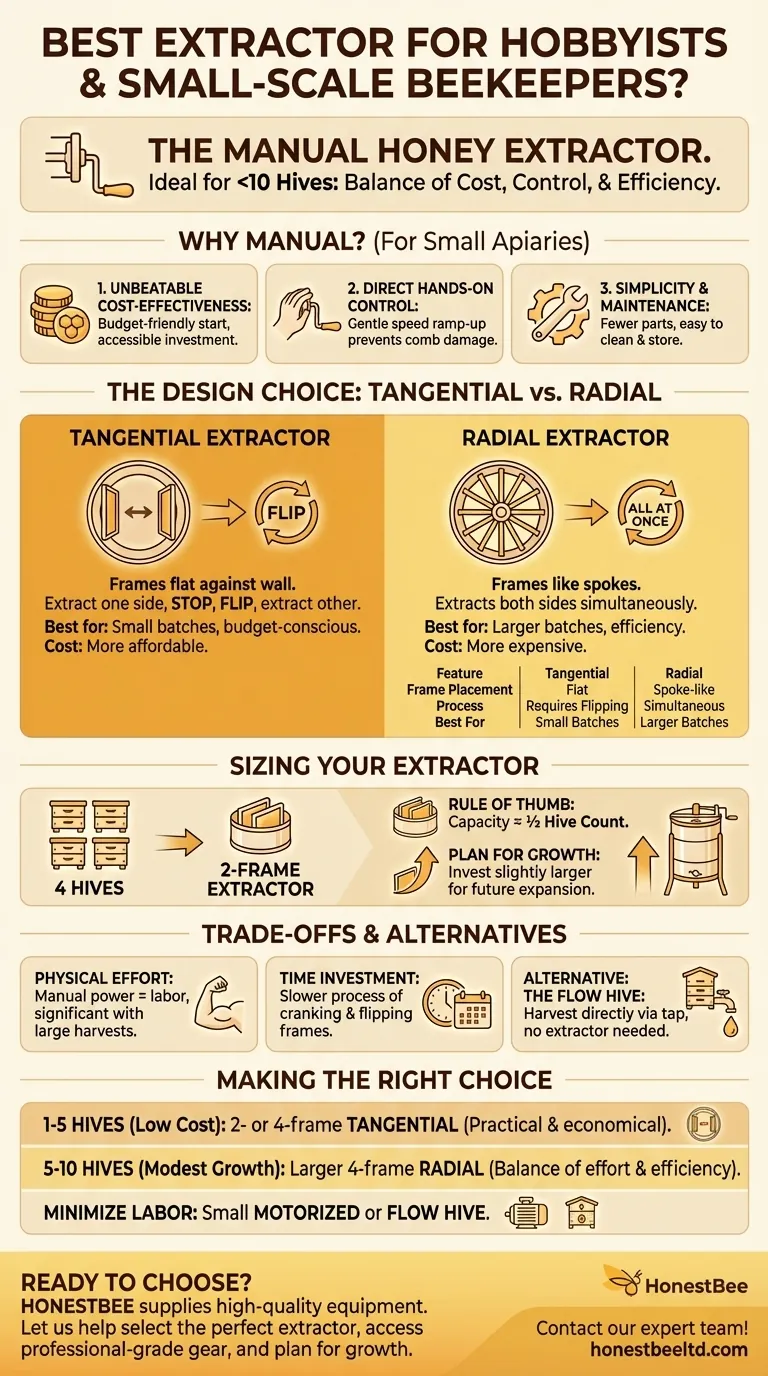
Related Products
- 6 Frame Manual Stainless Steel Honey Extractor Beekeeping Equipment
- HONESTBEE 3-Frame Manual Acrylic Honey Extractor
- 2 Frame Stainless Steel Manual Honey Spinner Extractor for Beekeeping
- Plastic Hand Crank 2 Frame Honey Extractor Low Price
- Automatic Honey Frame Uncapper Machine for Beekeeping
People Also Ask
- What type of honey extractor is best? Maximize Your Harvest Efficiency with the Right Choice
- What are the differences between manual and automatic honey extractors? Choose the Right Tool for Your Apiary
- How many frames can different types of honey extractors hold? Maximize Your Harvest Efficiency
- What is the relationship between beeswax harvesting and honey extraction? An Inseparable Process Explained
- What is the basic principle of the honey extractor? Harness Centrifugal Force for Efficient Harvesting











